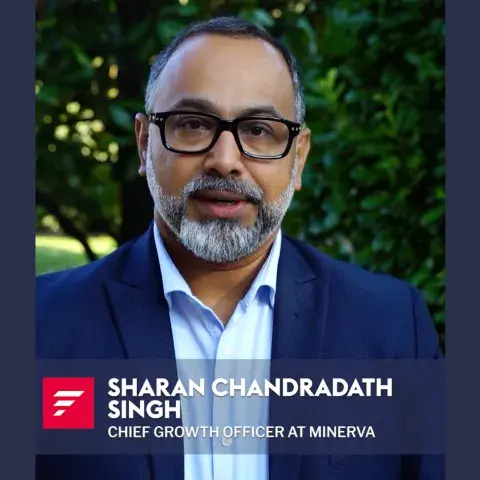
Franklin recently had the pleasure of welcoming Sharan Chandradath Singh, Chief Growth Officer at Minerva Project, to its campus in Lugano.
During his visit, he joined President Samuel Martín-Barbero for a conversation about the new frontiers of higher education. We took the opportunity to ask him a few questions about how universities can prepare for the rapidly changing world of learning and work.
Question 1: How do you see the profile of tomorrow’s students evolving, and what should universities do today to recruit them effectively?
The profile of students is evolving faster than ever. With AI transforming industries worldwide, young people are increasingly questioning the value of a traditional four-year degree focused on a single subject.
Future students will look for interdisciplinary programs that help them stay adaptable and develop durable skills—critical thinking, communication, and creativity—that can serve them across careers. Above all, they will seek confidence that their university experience will give them a tangible advantage in life and in the job market.
Question 2: What curriculum innovations are most urgent to serve the needs of these future learners?
Universities, he explained, must embed durable skills at the core of their programs, focusing less on static technical knowledge and more on how students think and learn.
Curricula should nurture both depth and breadth—allowing students to master their disciplines while understanding how they connect to others. “A doctor should know about business and data science, just as an engineer should understand social impact,” he noted. Interdisciplinarity is not just an advantage anymore; it’s a necessity.
Question 3: What are the key elements for building a resilient and future-ready campus culture?
A future-ready campus is one that prioritizes human connection. Singh reflected on Franklin’s setting in Lugano as a perfect example: open, natural spaces that inspire discussion and community.
“Future-proofing a campus isn’t about adding more technology or AI labs—it’s about keeping it humanistic,” he said. Learning thrives on meaningful relationships, and campuses must create opportunities for that connection to flourish.
Question 4: How do you envision university business models shifting in the coming years?
The traditional higher education model—three or four years of study followed by entry into the workforce—is no longer sufficient.
Universities must find ways to extend their intellectual capital to broader audiences and make their content more accessible and relevant. Technology, new teaching methods, and flexible program structures will be key to building sustainable and adaptive business models that reflect today’s learner needs.
Question 5: Beyond digitalization, what role will technology—and AI in particular—play in shaping the future of higher education?
While many institutions are racing to keep up with AI’s rapid evolution, Singh believes the real opportunity lies elsewhere: in building resilient thinkers capable of engaging with technology intentionally rather than reactively.
AI and technology should not replace human learning but amplify it, enabling more personalized, flexible, and data-informed educational experiences. “Technology removes the traditional constraints of education,” he said. “For those willing to embrace it, it can redefine how and where learning happens.”
Looking ahead
Sharan Chandradath Singh’s visit offered the Franklin community a powerful perspective on the transformation of higher education. His call for interdisciplinarity, innovation, and human-centered learning resonates deeply with Franklin’s mission: to prepare globally minded students who think critically, act ethically, and lead with purpose in an ever-changing world.

